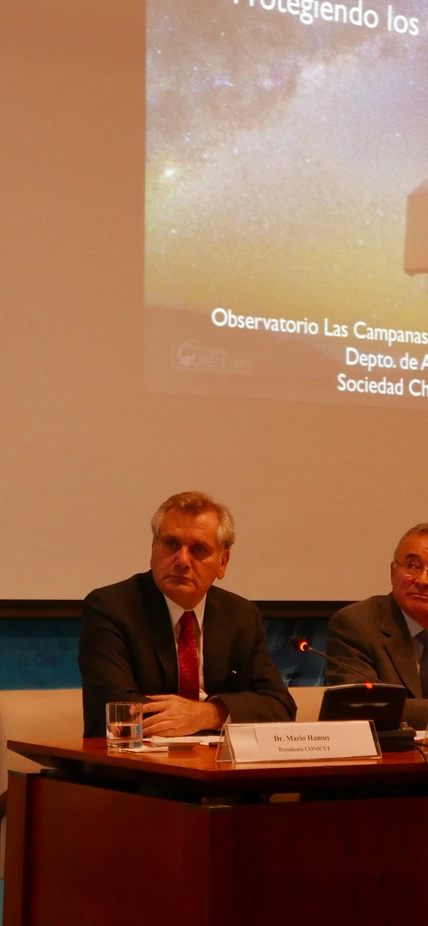Washington, DC—A group of astronomers from Carnegie’s Las Campanas Observatory including Mark Phillips and Guillermo Blanc, along with Miguel Roth from the Giant Magellan Telescope Organization, presented the case against light pollution to Chilean authorities earlier this month.
Combating light pollution is not about demanding complete darkness, it is about illuminating human spaces well, Blanc explained. He reported on the effects of light from cities, highways, and mines near the nation’s biggest astronomical observatories.
Of particular concern for the researchers and technical staff at Las Campanas and nearby La Silla is the Algarrobo highway. Blanc suggested downward-facing lights with limited emissions that are monochromatic, such as filtered and “amber”-colored LEDs, would improve the situation.
The nation’s first lighting-related regulations date to 1998, and they apply only to northern Chile, in an effort to mitigate negative effects on astronomical observations. In 2012, a new ordinance was created, which considered additional concerns such as limits on the intensity of emitted light, the angle of emission, and the wavelength range allowed.
The discussion was part of the inaugural International Day of Light as proclaimed by UNESCO for which there were events planned around the world. The Chilean program was organized by national science and technology agencies and other groups to draw attention to problems caused by light pollution. The facilitating institutions included the Office for Protection of the Quality of the Northern Chilean Skies (OPCC), the Chilean Astronomical Society (SOCHIAS), the Ministry of Environment, the National Science and Technology Commission (CONICYT), and the Ministry of Foreign Affairs.
Experts from diverse fields ranging from biology, astronomy, and medicine to architecture, urban planning, and design presented their light pollution concerns with a goal of reviewing and improving the state of Chile’s public policies on the matter.
Other presentations included details about how seabird populations, particularly fledglings, are affected by artificial lights, the impact of light pollution on human sleep cycles, and how our circadian rhythms are altered by shifting sleep schedules.
“This event was the product of a long-term relationship between the international observatories in Chile, including Las Campanas, and the Chilean government to work on the protection of the Atacama Desert as a natural laboratory for astronomical research,” Blanc said afterward. “It shows Carnegie's commitment to have a positive social and environmental impact in LCO's host country.”
Caption: Image from Chile's first International Day of Light are courtesy of Javiera Rey.
